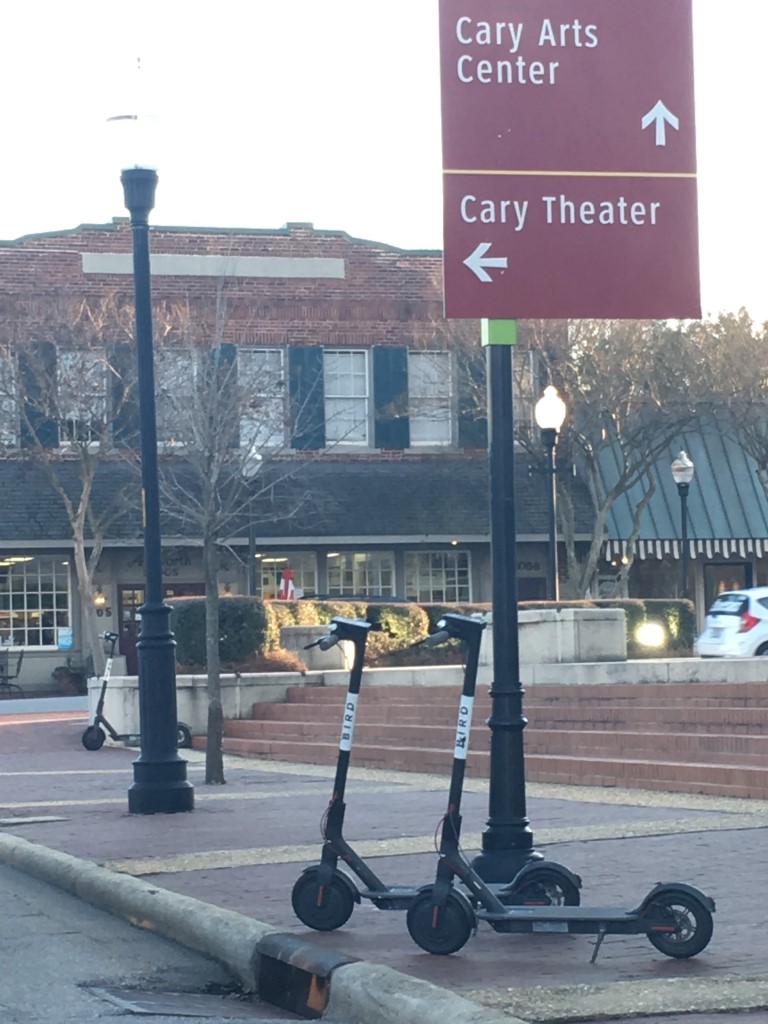
On December 13, Council and staff held an initial conversation about the presence of electric scooters in Cary. To keep pedestrian passageways accessible to our citizens, Council strengthened an ordinance clarifying Cary’s authority to remove obstructions in public rights-of-way.
Shared electric scooters, by their very nature, are an example of how technology can disrupt the status quo and prompt municipalities to examine their practices and develop new ways of thinking to meet changing demands. Electric scooters also represent different things to different people. In the eyes of many, scooters are a sign of a vibrant and maturing community. They are also a sign of progress that our efforts downtown, in particular, have increased pedestrian activity
.
Scooters were first spotted in Cary at the beginning of September 2018. Since then, the activity and volume have been variable, but on a much smaller scale than Raleigh and other large cities. Although our experience has differed from neighboring municipalities, it remained important to consider how the introduction of scooters to our community applied to our current ordinance. We identified an ordinance, Section 28-6, that prohibited certain types of obstructions. It was adopted at a time when the concern was the unauthorized placement of gates, barriers and more traditional obstructions.
Keeping sidewalks and other public spaces clear for pedestrians is an important value for Cary and its citizens. The clarified ordinance provides staff with well-defined authority to clear obstructions — electric scooters being just one example — as necessary. This approach appropriately balances our regulatory response in a way that doesn’t impede progress of new and exciting experiences for our citizens. The ordinance amendment recognizes that while the presence of scooters in Cary isn’t as large as other communities, it is also not something we want to leave to chance.
Similar to the tips we offer for pedestrians and bicyclists, we have information on our website that may be helpful for scooter riders. For example, like bicycling, if citizens choose to ride a scooter, we ask that they wear helmets for safety, ride with the flow of traffic, and yield to pedestrians. Likewise, we ask that scooter riders take care to park scooters upright and clear of sidewalks and other passageways. These include handicap ramps, bus stops, benches, and entryways into businesses or other buildings.
Moving forward, staff will continue to monitor the changes, conditions and the dynamic regulatory environment around electric scooters, adapting our approach as necessary and appropriate.